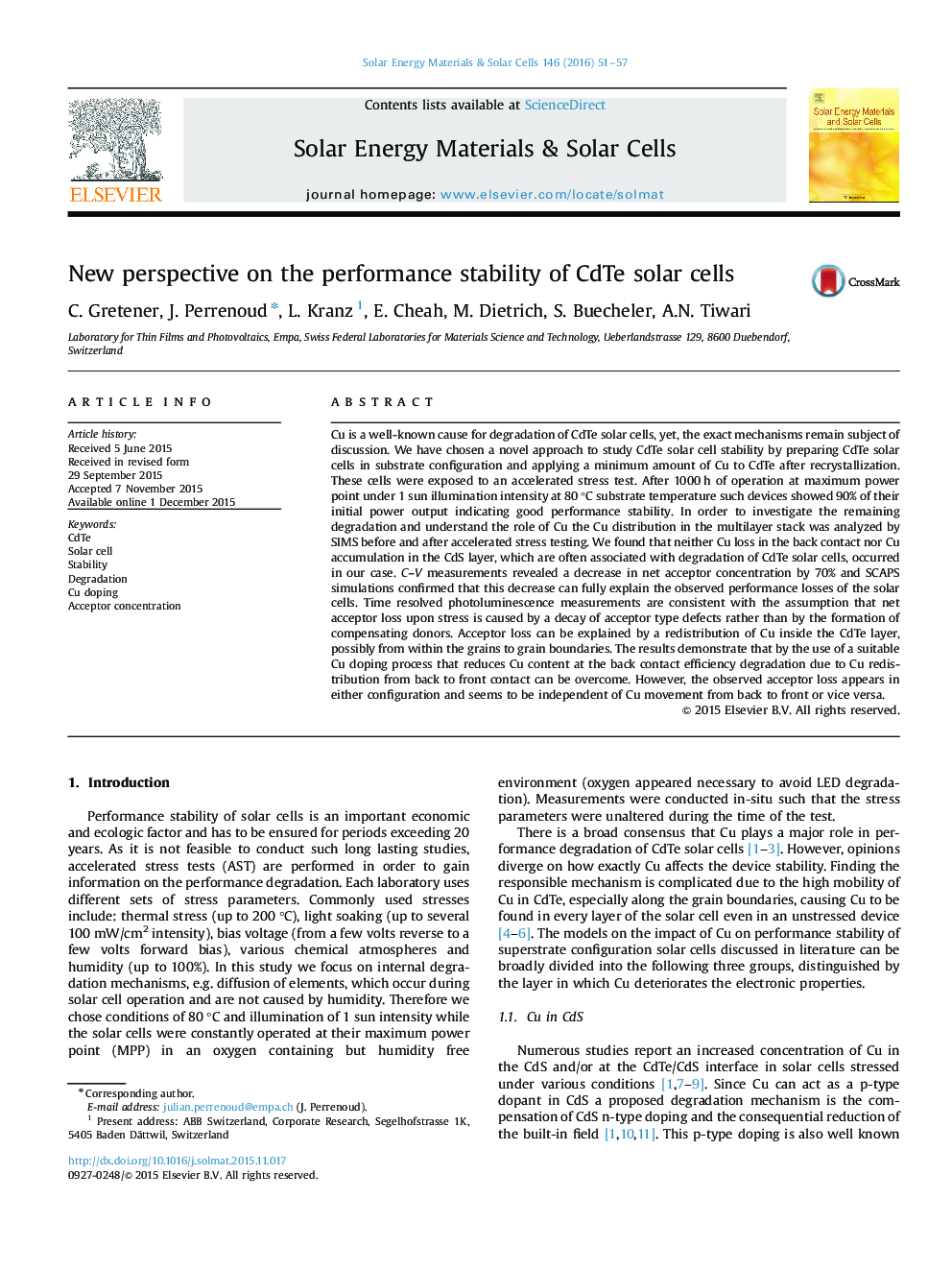| کد مقاله | کد نشریه | سال انتشار | مقاله انگلیسی | نسخه تمام متن |
|---|---|---|---|---|
| 77642 | 49291 | 2016 | 7 صفحه PDF | دانلود رایگان |

• The performance stability of CdTe solar cells in substrate configuration was investigated.
• After 1000 h of accelerated stress test such cells still deliver 90% of their initial power output.
• As the dominant origin of degradation, a loss in net acceptor concentration by 70% was identified.
Cu is a well-known cause for degradation of CdTe solar cells, yet, the exact mechanisms remain subject of discussion. We have chosen a novel approach to study CdTe solar cell stability by preparing CdTe solar cells in substrate configuration and applying a minimum amount of Cu to CdTe after recrystallization. These cells were exposed to an accelerated stress test. After 1000 h of operation at maximum power point under 1 sun illumination intensity at 80 °C substrate temperature such devices showed 90% of their initial power output indicating good performance stability. In order to investigate the remaining degradation and understand the role of Cu the Cu distribution in the multilayer stack was analyzed by SIMS before and after accelerated stress testing. We found that neither Cu loss in the back contact nor Cu accumulation in the CdS layer, which are often associated with degradation of CdTe solar cells, occurred in our case. C–V measurements revealed a decrease in net acceptor concentration by 70% and SCAPS simulations confirmed that this decrease can fully explain the observed performance losses of the solar cells. Time resolved photoluminescence measurements are consistent with the assumption that net acceptor loss upon stress is caused by a decay of acceptor type defects rather than by the formation of compensating donors. Acceptor loss can be explained by a redistribution of Cu inside the CdTe layer, possibly from within the grains to grain boundaries. The results demonstrate that by the use of a suitable Cu doping process that reduces Cu content at the back contact efficiency degradation due to Cu redistribution from back to front contact can be overcome. However, the observed acceptor loss appears in either configuration and seems to be independent of Cu movement from back to front or vice versa.
Figure optionsDownload as PowerPoint slide
Journal: Solar Energy Materials and Solar Cells - Volume 146, March 2016, Pages 51–57